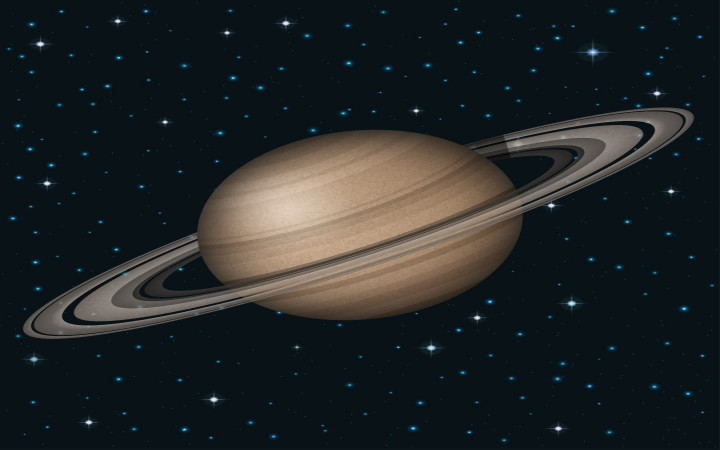Today’s Wonder of the Day was inspired by caitlin. caitlin Wonders, “what are saturns rings made of” Thanks for WONDERing with us, caitlin!
If you had a spaceship and could go anywhere in the universe, where would you go? Would you hunt for aliens on Mars? Perhaps you'd head to Mercury for a great tan? Or would you head much farther out to visit that beautiful planet with those fascinating rings? What are we talking about? Saturn, of course!
Whenever students study the planets for the first time, Saturn always seems to fascinate students, mainly because of the bright rings that surround the planet. Saturn isn't the only planet with rings, though. Jupiter, Uranus, and Neptune also have rings, but none of these other planets can boast the bold, spectacular rings that surround the second largest planet, Saturn.
Saturn has seven main groups of rings, each of which is separated by spaces called divisions. Each primary ring group consists of thousands of smaller rings, called ringlets. The main ring groups are named alphabetically: A, B, C, D, E, F, and G. However, they were named in the order in which they were discovered, so starting at Saturn and moving outward their order is D,C, B, A, F, G, and E.
Saturn's rings are enormous. The largest ring groups can span over 170,000 miles in diameter. While they may be wide, though, they're relatively thin. Most of the rings are no more than 650 feet thick.
The first astronomer to see Saturn's rings was Galileo in 1610. Ever since, astronomers have been trying to learn more about these unique features of Saturn.
While the rings appear to be solid, they're actually not. Instead, they're made up of a seemingly-infinite number of floating chunks of ice, rock, and dust. These particles can vary in size from a grain of sand to pieces the size of a house.
The rings also do not sit still. Instead, they orbit Saturn at very high speeds. They're also not perfect circles. The gravitational pull of Saturn's moons creates a variety of dips and bends in the rings.
For years, astronomers were puzzled by what could have caused Saturn's rings. Today, astronomers believe the particles that make up Saturn's rings likely came from collisions between comets or asteroids and Saturn's many moons. Whereas Earth has one moon, scientists have identified at least 60 moons orbiting Saturn. Debris fragments from these moons have spread out around Saturn to form the ring patterns seen today.
Astronomers know much more about Saturn and its rings thanks to the ongoing exploration of Saturn by the Cassini spacecraft. Cassini left Earth in 1997 and arrived at Saturn in 2004.
The Cassini spacecraft has been orbiting Saturn ever since, sending a constant stream of pictures and new information back to Earth. Thanks to the Cassini spacecraft, astronomers now believe that Saturn's rings may be as old as the solar system, or approximately four billion years old!




